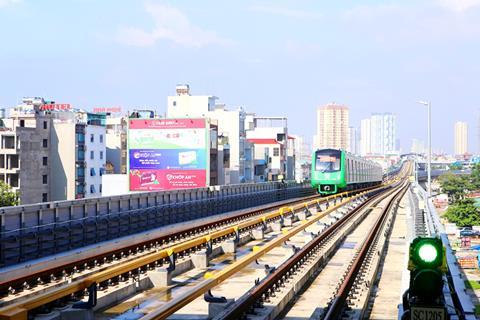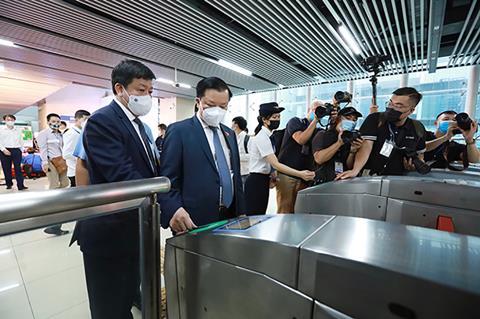
VIETNAM: Hanoi’s first metro line was opened by Deputy Prime Minister for Industry & Economy Lê Văn Thành and Minister of Transport Nguyễn Văn Thể with a ceremony at Cát Linh on November 6.
The elevated Line 2A runs 13·1 km from Cát Linh southwest to Yên Nghĩa via the Hà Đông business district. There are 12 stations, and the depot is at the end of a 2·4 km branch from Yên Nghĩa.

The line was approved in October 2008 and construction began in October 2011. The project was the responsibility of the Ministry of Transport rather than the city authority, unlike other lines planned in Hanoi, and has been financed from government resources and Export-Import Bank of China official development assistance loans.
The line uses Chinese technology, with China Railway 6th Group appointed as engineering, procurement and construction contractor and CRRC supplying rolling stock.
Opening was planned for 2016, but postponed several times, with the first test runs with passengers taking place in September 2018.
The cost of the project was initially put at 8 769·9bn dong, however the final cost of construction and rolling stock was 18 001·5bn dong, of which 13 867·1bn came from Chinese loans.
Operations are managed by Hanoi Metro Co, supported by advisers from China Urban Railway Co.

CRRC has delivered 13 four-car trainsets since March 2017. The 1 435 mm gauge 750 V DC third rail vehicles will operate at a maximum speed of 80 km/h and an average commercial speed of 35 km/h.
During the first week services are scheduled to run every 15 min between 05.30 and 22.00, increasing to even 10 min in the second week. The end-to-end journey time is 23 min, and travel will be free of charge for the first two week. After six months of operation, operating houses will be extended until 22.30 and headways reduced to 6 min.

Construction is underway on the 12·5 km east-west metro Line 3 between the main railway station and Nhon, which will include 4 km in twin-bore tunnel with four of the 12 stations being underground.
Longer term plans envisage a network of nine lines totalling 417·8 km by 2030, including 75 km underground. Further expansion would see the network reach 12 lines, including three monorail lines, by 2050.



